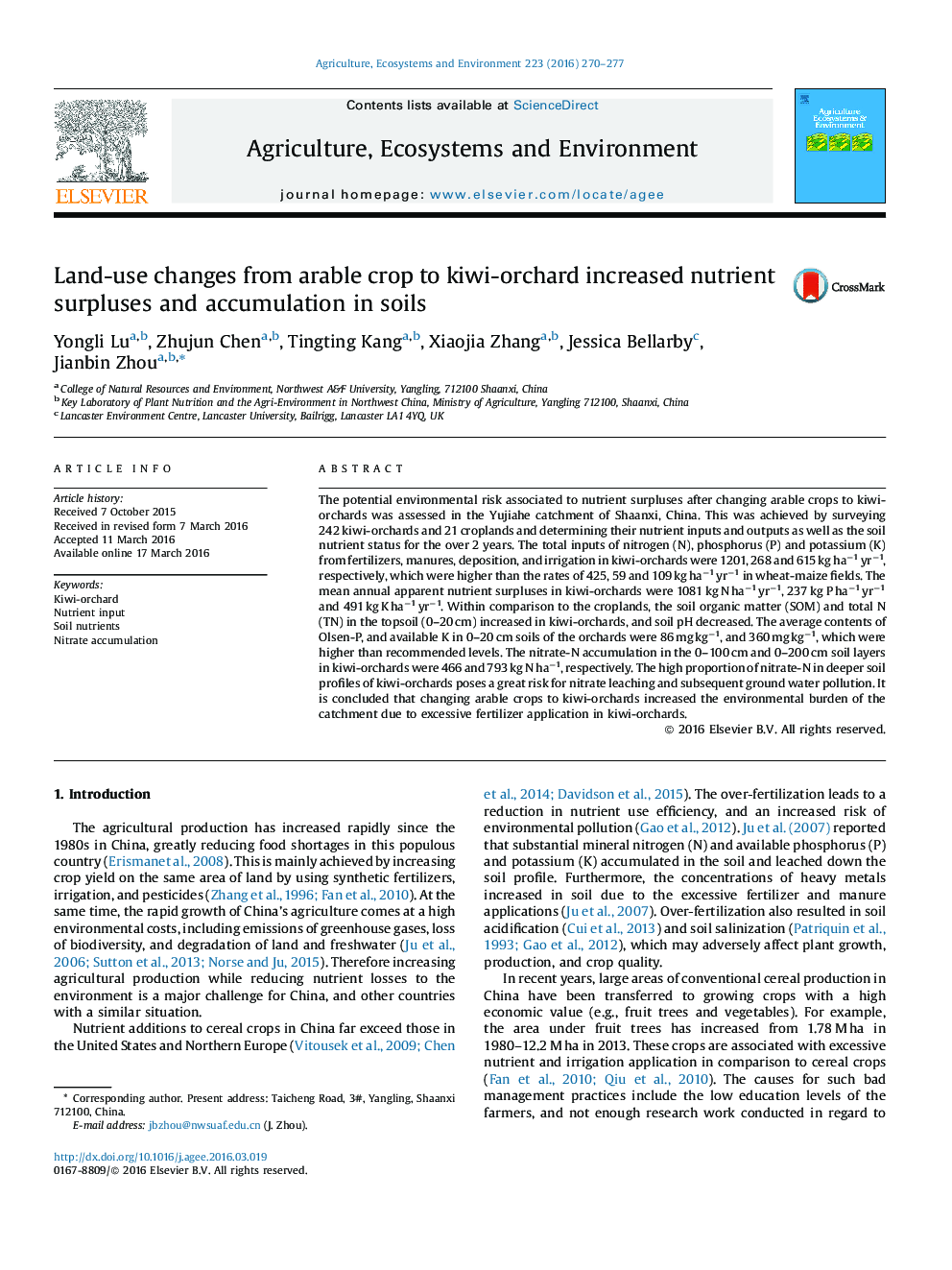| کد مقاله | کد نشریه | سال انتشار | مقاله انگلیسی | نسخه تمام متن |
|---|---|---|---|---|
| 2413505 | 1552029 | 2016 | 8 صفحه PDF | دانلود رایگان |
• Nutrient budgets of kiwi-orchard and arable crop systems in a catchment were compared.
• Nutrients accumulated in soils of the two systems were determined.
• Very large surpluses of N, P and K were found in the kiwi-orchards.
• High amount of nitrate-N was accumulated in deeper soil profiles of kiwi-orchards.
• Changing arable crops to orchards increased the environmental burden of the catchment.
The potential environmental risk associated to nutrient surpluses after changing arable crops to kiwi-orchards was assessed in the Yujiahe catchment of Shaanxi, China. This was achieved by surveying 242 kiwi-orchards and 21 croplands and determining their nutrient inputs and outputs as well as the soil nutrient status for the over 2 years. The total inputs of nitrogen (N), phosphorus (P) and potassium (K) from fertilizers, manures, deposition, and irrigation in kiwi-orchards were 1201, 268 and 615 kg ha−1 yr−1, respectively, which were higher than the rates of 425, 59 and 109 kg ha−1 yr−1 in wheat-maize fields. The mean annual apparent nutrient surpluses in kiwi-orchards were 1081 kg N ha−1 yr−1, 237 kg P ha−1 yr−1 and 491 kg K ha−1 yr−1. Within comparison to the croplands, the soil organic matter (SOM) and total N (TN) in the topsoil (0–20 cm) increased in kiwi-orchards, and soil pH decreased. The average contents of Olsen-P, and available K in 0–20 cm soils of the orchards were 86 mg kg−1, and 360 mg kg−1, which were higher than recommended levels. The nitrate-N accumulation in the 0–100 cm and 0–200 cm soil layers in kiwi-orchards were 466 and 793 kg N ha−1, respectively. The high proportion of nitrate-N in deeper soil profiles of kiwi-orchards poses a great risk for nitrate leaching and subsequent ground water pollution. It is concluded that changing arable crops to kiwi-orchards increased the environmental burden of the catchment due to excessive fertilizer application in kiwi-orchards.
Journal: Agriculture, Ecosystems & Environment - Volume 223, 1 May 2016, Pages 270–277
